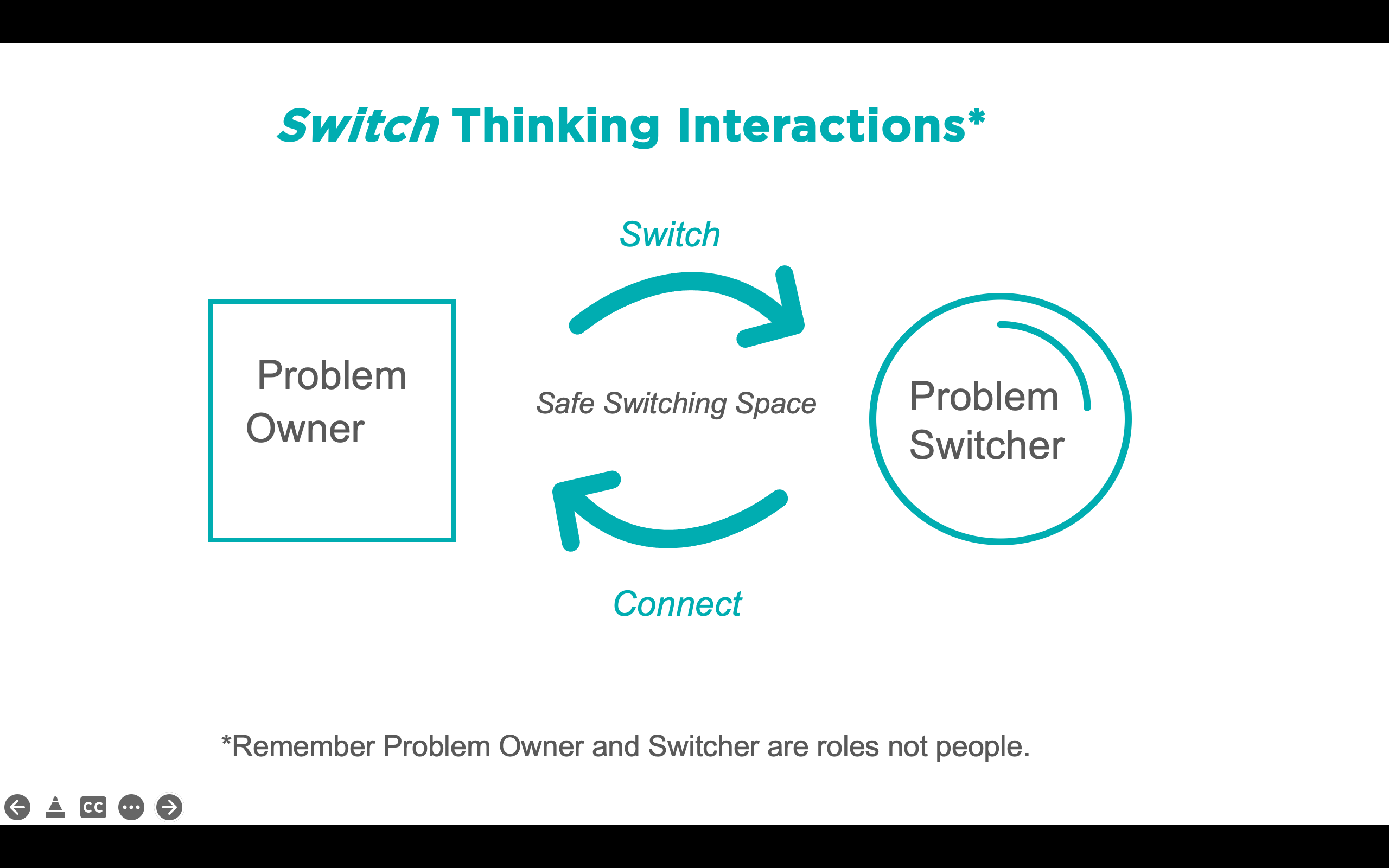There are two types of conversations in innovative teams and organisations.
The first are formal conversations in ideation, brainstorming, hackathons, coaching or leadership feedback sessions or meetings.
The second tend to be spontaneous and informal.
Both are important yet each have their strengths and weaknesses.
The formal conversations tend to lack a free-ranging feel but have a structure, objectives etc.
The informal can have an immediate, off the cuff style but lack any structure and rely on a random comment for example to solve the problem at hand.
Q. But is there a third way?
A. Yes
These are called Switch Thinking Conversations.
There is some structure but still some freedom.
For example:
The structural elements are as follows:
- There is a goal e.g. I would like some feedback on my new idea
- A short time frame e.g. do you have 10 minutes?
- Specific roles e.g. the problem owner and the problem switcher
- With a limited number of people e.g. a small group
- And the use of at least one of the 6 switches
The unstructured elements of a switch thinking conversation might include:
- It can happen anywhere
- Anytime
- With anyone
- About any problem, challenge, situation or issue
Hence a switch thinking conversation offers the best of both worlds.
There is some structure and a degree of freedom.
By doing so the chances of unlocking a new insight or an ‘aha’ moment is increased.
It’s also more productive and efficient yet still involves a large dollop of creativity via the 6 switches.
The goal of a switch thinking conversation remains to help yourself and/or others to change their thinking.
By doing so you can get unstuck, create new ideas or solutions or just help others see a situation differently.

